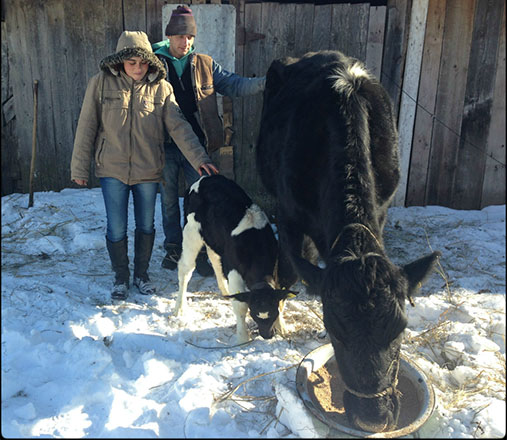Deep in the heart of the Transylvanian region of Romania lies the village of Viscri, which the United Nations Educational, Scientific and Cultural Organization (UNESCO) deemed a World Heritage Site in 1993.
The village is not only one of the oldest in Brasov County, but also in all of Transylvania—its beginning lost in time. Hungarian kings, who wanted to secure the borders of their newly conquered territory, brought Germans into the area in the 12th century to enclose the local population and to develop the local economy. After their arrival, these German colonists found a chapel previously built by the Szeklers (a Turkic tribe that later adopted the Hungarian language). The chapel was integrated into the new church built by the Germans, making it one of the oldest structures of its kind in Transylvania.
The beauty of the fortified church is framed by quaint houses lining each side of the main road. Viscri is a small village that has stayed true to its traditional layout and architecture, and, like many of the villages in the region, has no more than about 500 people. Here, people work to preserve their cultural heritage as one would preserve a family heirloom passed from generation to generation.

Mr. Gabor, the village’s blacksmith, has a workshop that takes you back in time. Here you can witness iron horseshoes and tools made from century-old models. Mahendra Lohani, the vice president of Heifer’s Asia-Europe divisions, visited this project last October. As always, Mr. Gabor and his brother (known affectionately by locals as “the Gabor brothers”) were ready to share their craftsmanship, and showed Lohani how to forge a raw piece of iron into a finished object. Thanks to their steady and reliable handiwork, the village houses have been able to maintain their traditional look using authentic iron hinges and nails.
Women bring a different contribution to the cultural heritage of Viscri Village. A women’s handcrafting community knits clothing and decorations, using techniques passed down by the village elders. These wonderful handmade creations are sold in the “crafts boutique” in the village center.
Where does Heifer fit in with this tiny, historically rich community?
It has been two months since the start of a Heifer project there when 70 Irish heifers landed on the frozen Romanian ground through the Empowering Roma Women in Mures County project. Heifer Romania focuses on the poorest communities who lack economic infrastructure, typically found in rural mountainous areas. Our work there is centered on advocating for small-scale farmers and linking them to markets in need of their products.
When Mariana and Iulian woke up one morning, the sun was shining on a blanket of pristine white snow. They decided it was the perfect day to introduce the first calf born of the project in Viscri village to the world, Star, who received her name from the star-shaped patch on her forehead.
“It is said to bring good luck,” Mariana said.
Since they got married, Mariana and Iulian’s only desire was to start a family and build a home. Throughout the village, they have a reputation for their remarkable care with animals and told Heifer Romania that they felt “blessed to have been chosen as beneficiaries.”
They attended the training courses with all the families in the project. The trainings have equipped them with the skills they need to raise animals to produce milk that meets the European Union’s quality standards.
This project continues to support small-scale farmers who would otherwise have little opportunity for business potential. Heifer Romania, together with Bothar Ireland, encourages small-scale producers to work together to form cooperatives for long-term profitable businesses, all founded on high quality milk production.
The times are challenging for the farmers in Viscri, thus they need all the support they can get. Each family is passionate and ready for their turn to Pass on the Gift of knowledge and hope to everyone soon.
“In applying all the techniques I have learned I feel like a new person. By giving me knowledge, the Heifer project has already changed my life,” Iulian said.
Story by Andreea Gherba, Communication & PR Coordinator, Heifer Romania
Photos courtesy of Heifer Romania